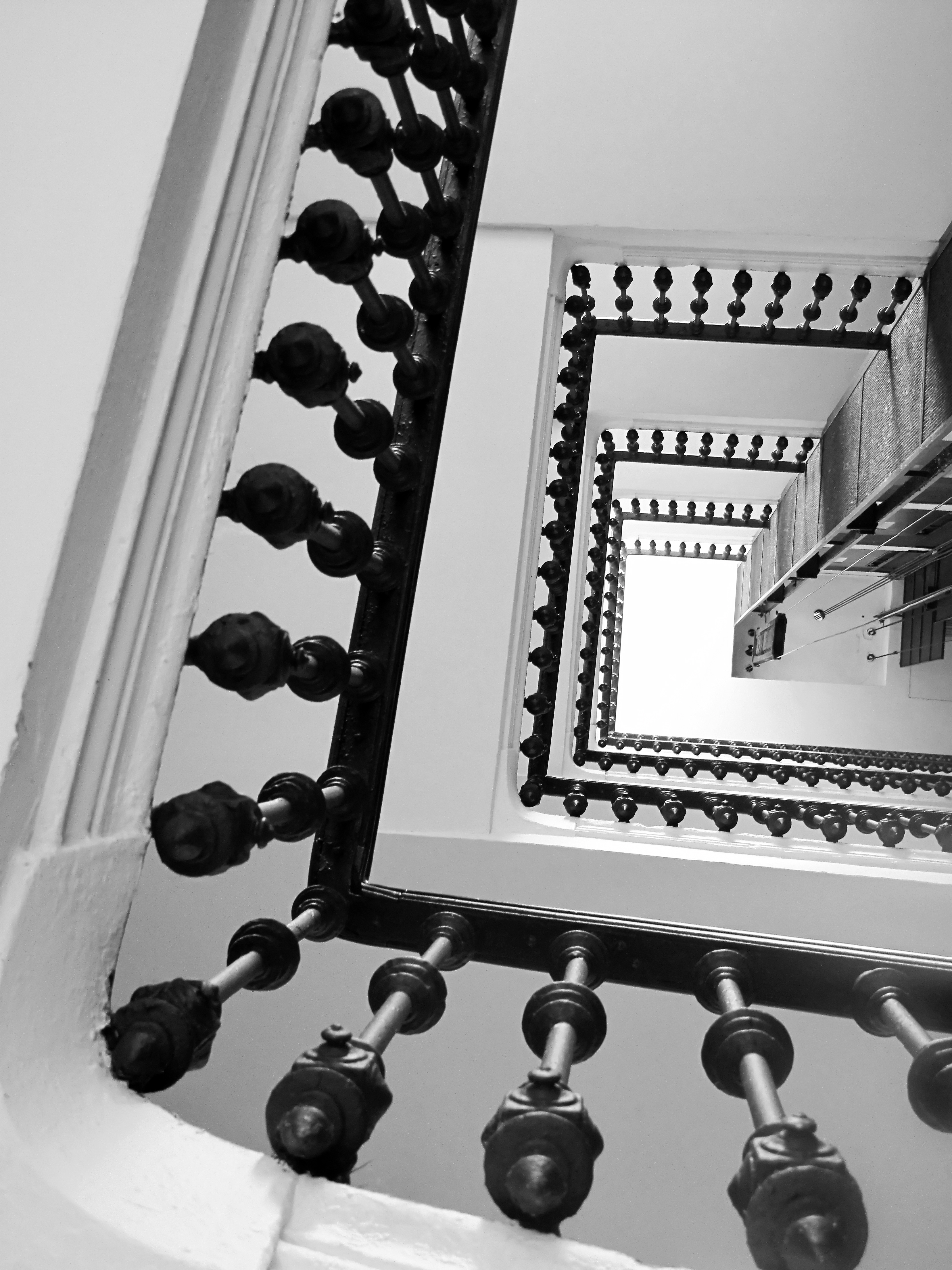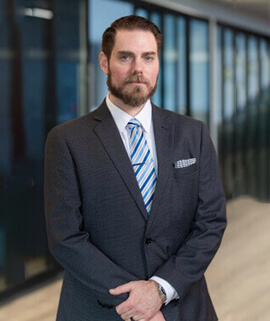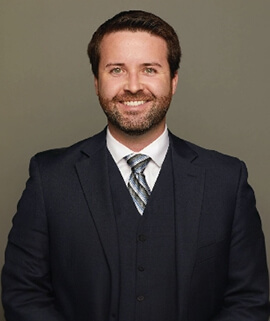Estadísticas y cifras de responsabilidad civil en locales
- What Are Premises Accident Statistics?
- Causes of Premises Liability Accidents
- Injuries Present in Premises Liability Lawsuits
- Leyes de responsabilidad de los locales y negligencia
- What To Do To File A Premises Liability Claim
- Value of a Premises Liability Lawsuit
- Premises Liability settlements
- Potential Restitution from a Premises liability Lawsuit
- Premises Liability Statute Of Limitations
What Are Premises Accident Statistics?
In 2015 alone, more than 33,000 individuals died in slip and fall accidents. Falls most often lead to lesiones cerebrales and are the highest leading cause of non-fatal injuries. There are just under 250,000 incidents per year (20 to 30% of which lead to injuries), but the actual number is likely much higher than what is reported. Many individuals who get hurt may not go to the doctor to get treated, and even fewer will go to a law firm to seek representation and file a claim.Más información sobre sus opciones jurídicas: llame al (855) 339-8879 para hablar ahora con un representante.
The retail industry is home to 60% of falls, but the majority of deaths happen in the home. Additionally, a quarter of pedestrian accidents occur due to faulty or aceras defectuosas. There are over 100 deaths each year thanks to falling trees and tree branches, or landscape-related issues. In legal areas, 1 in 10 lawsuits are related to premises liability. Premises liability victims are paid about $4 billion per year, but only 6% of cases feature punitive damages, which are often large amounts that inflate case value. The median settlement or verdict for premises liability lawsuits is around $45,000, but can reach $90,000. In cases where discs are damaged, herniated, bulging, or similar, the median climbs to $150,000. This is not uncommon, given that spine injuries are often debilitating in many ways.Nuestros veredictos y acuerdos recientes
$500,000
$600,000
$599,000
$420,000
$460,000
$360,000
$300,000
$310,000
Causes of Premises Liability Accidents
There are many rules and regulations that must be adhered to in any place of business or in any home. Even public places have standards and building codes that must be followed. There is also a general rule of safekeeping; if it can be potentially dangerous to others, it should not exist, or there should be an adequate warning for anyone who may come near it. It is shocking that so many different locations can lead to accidents with one mistake or oversight. Some of them include:
Staircases, Steps, Ramps, and Escalators
Any walkway can potentially lead to injuries if it is not properly maintained. Upkeep is important, but some locations do not practice it. Staircases, for example, should not be too small, slippery, or have any holes in them. There should also be banisters and handrails to guide people up and down. Ramps are similar; they should not be too steep or have any cracks that could potentially cause individuals in wheelchairs to get stuck or flip. Escalators y moving sidewalks are automated, but a sudden stop or mechanical failure can throw anyone forward or backward and cause severe injuries.
Potholes, Holes, and Ditches
There should be adequate warning about any holes in the ground that could cause people to get their feet stuck. Others have been riding bicycles and scooters when they fell into holes, leading to accidents. Potholes in the street also can cause broken axles, popped tires, and more. Many times, individuals are not staring at the ground when they are traveling, and if they don’t see the holes, they can easily get hurt.
Falling Trees and Tree Branches
Trees should be properly trimmed so that the branches do not hang too low. Low-hanging branches can carry too much weight and the gravity could cause them to fall, breaking anywhere near the trunk. Trees may also die and become easily moved, and they could fall in storms or rough weather.
Sidewalk Conditions
Sidewalks should be properly maintained by whomever the property owner is. Holes and cracks are only one issue that can arise; property owners should make sure to shovel all snow, salt or melt all ice, and keep the sidewalk free of branches, dirt, gravel, and anything else that can impede the progress of pedestrians or cause them to fall and get hurt.
Carpeting
In businesses and homes, there may be carpeting that has been laid down improperly. The caret could be torn in certain areas from excessive use, mistaken cuts, rolling chairs, animals, and more. It is hard to see sections of torn carpeting if it is flush with the rest, and you can easily snag your foot on the raised section.
Merchandise and Obstacles in Aisles
Companies should not have merchandise, items, obstacles, objects, and other things in the aisles that could make it hard for pedestrians to move. They may lose their balance in trying to go around the items or they may slip on pieces that are sticking out. Stockers and workers should be sure to keep the aisles free for customers. This could also be a fire hazard if there is a large blockage.
Suelos resbaladizos
Business should have signs that indicate when floors are wet or slippery. Spills from refrigerators, beverages, and more can cause tile floor to become slippery. There can also be oil and grease on the floor at a mechanic’s garage or excess materials at factories. It is hard at times for businesses to catch every slippery floor.
Obras de construcción
Construction sites are one of the most dangerous areas that you can be near. There are cranes and scaffolds that could have many items on them which can fall at any moment. Workers wear hard hats and protective gear to not get hurt by rocks, lumber, metal, and more. You should always exercise extreme caution when passing by construction areas.
Bed Bugs, Asbestos, and Carbon Monoxide
It is the duty of apartment landlords and hotel or motel owners, among others, to provide safe, sanitary, and clean conditions for any guests. Some owners do not adhere to these rules, though, and never check the rooms or units for issues. Bed bugs may spread from place to place and go unchecked for years, while asbestos could slowly contaminate as well. Carbon monoxide poisoning is dangerous enough that it can kill families overnight. Property owners should be sure to inspect the entire premises to check for toxic gases, vermin, infestations, and more.
Injuries Present in Premises Liability Lawsuits

- Conmociones cerebrales
- Lesiones cerebrales traumáticas
- Lesiones craneales cerradas
- Daños en órganos internos
- Problemas pulmonares
- Heart trouble
- Lesiones cervicales
- Lesiones medulares
- Hernias y protuberancias discales
- Dislocaciones
- Fracturas
- Huesos rotos
- Esguinces
- Cepas
- Rotura de ligamentos
- Músculos desgarrados
- Parálisis
- Daño nervioso
- Quemaduras
- Electric shocks
- Lesiones de cadera
- ACL, MCL, and LCL damage
- Daño cerebral
- Heridas punzantes
- Foot and ankle injuries
- CRPS
- Lacerations, cuts, bruises, and abrasions
- Hematoma
- Paraplejía
- Tetraplejia
- Coma
- Muerte
Although some types of accidents lead to more damage than others, you should not try to shrug off injuries after an incident. It is important that you get the help you need.
Leyes de responsabilidad de los locales y negligencia
In order to file a premises liability lawsuit, you should have ample evidence, but you must also be aware of the different laws that you have to follow and what constitutes premises liability in the first place. For one, you have to identify what kind of visitor you were. Invitees are owed the highest duty of care and should not be subjected to any harm at all; they are usually customers or individuals on the property who are exchanging services or are there for a mutual benefit. Licensees are those who are not there for a specific service but are perhaps social guests or solicitors. They are generally expected to abide by the rules of the premises and do not need to be specifically catered to. Lastly, there are trespassers who have no legal right to be on the property. However, just because it is illegal for them to be there, that does not give property owners the right to set traps or cause them harm. For example, if private property extends into a space that is public on both sides and people often cross it for ease and efficiency, the property owner cannot try to cause any harm to the trespassers. In order to presentar una reclamación por responsabilidad de los locales, the following points can apply. Only one needs to be shown to be true. They are: The property owner caused the issue, whether by installing a defective stove, bringing bed bugs in with secondhand furniture, creating a hole while repairing the sidewalk, and more The property owner knew about the trouble but did not fix it, such as when you repeatedly report an exposed wire to your landlord, when a spill goes unattended despite complaints to the manager in a store, and more The property owner did not know about the problem but reasonably should have if he had been diligent in his duties, which is the most common complaint; it often applies to supervisors who do not send anyone to check on issues, homeowners who ignore their sidewalks, and other situations You can therefore claim that a property owner was negligent if he could have reasonably prevented the incident from happening but did not. Property owners will often try to deflect liability and deny negligent action or inaction; they will claim that visitors should have had the sense to watch where they are going or that the defects were not a factor in causing any other accidents beforehand.
What To Do To File A Premises Liability Claim
To file a premises liability claim, you will need ample evidence to do so. This evidence can take on many forms and can be gathered from many sources. You should take care to gather as much proof as you can at the scene of the incident so that you do not have to worry about anything being changed or fixed. As long as you document the issues in a timely manner, your claim will be more likely to succeed. The very first step you should take is pursuing medical attention. You could call the paramedics or go to the hospital or a healthcare facility for treatment. This is important because it will form the basis for your claim. If you weren’t injured, you won’t be able to file a personal injury lawsuit. The paramedics can treat you at the scene and determine how extensive your injuries are and if you need emergency help. Some people try to forgo medical treatment, which is not wise for your health. It is also detrimental to your claim – if there is no indication that you received or pursued medical help, the insurance agent considering your claim will see a red flag. He will not believe that you were as injured as you said or he will say that you were actually hurt in another incident and you are trying to wrongfully collect compensation. The next course of action is to take photographs of your injuries, the scene of the incident, any involved parties, and more. It is important that you get photos of the premises before the business owner or property owner conceals them or fixes them. He will do all he can to claim that they were not problematic when you were hurt. Your proof can show their actual state. You may also acquire surveillance and security footage from a store camera if possible. There may have been witnesses who saw the accident happen or who were similarly affected. You can interview them and collect their statements and testimonies about what happened, how the defect was present, and more. It is beneficial to have additional perspectives to support your case. In the same vein, there could have been police called, who can file a report that you can add to your evidence package. You should file an incident report with the company if you were injured at a business. This will put the incident on file; you can keep a copy of it to show that they were aware and that no action was taken. It is also important that you gather business details and insurance information. There should be ample documents proving various parts of your case, such as medical receipts, proof of purchases or receipts showing your presence in a store, and more. It is important that you do not throw away anything that can prove your presence in a location. Finally, you should reach out to a lawyer who can handle your premises liability case for you. The attorney will make sure that your evidence is appropriately organized and will send the package to the insurance agent along with a demand letter requesting a certain amount of compensation. Without an attorney representing you, you may not be given any help by the insurance agent; he may simply throw your claim out or ignore it. A lawyer can stay on his case and ensure that your lawsuit is getting the attention it needs. Further, a lawyer can hire expert witnesses to attest to the state of your damages, building codes and regulations, previous incidents, and more. You may not have the energy, knowledge, money, or time to handle a legal claim against a property owner. It is in your best interest to hire an attorney who can take care of the process while you undergo any treatments and recover from your injuries.
Infórmese sobre sus opciones de indemnización llamando al (855) 339-8879.
Value of a Premises Liability Lawsuit
A premises liability lawsuit can be worth a lot of money in certain circumstances. The primary factor that is used to determine the worth of your lawsuit (which is measured by an insurance agent) is your injuries. The extent of your injuries, such as how debilitating they were, how much of your body they affected, and more, will be taken into consideration, as well as the duration – if your injuries are long-lasting or permanent, you’ll get a higher offer. If your injuries also forced you to take time off work, require accommodations, change jobs, or go on permanent disability, your offer could be increased as well. In addition to your injuries, your age and type of job will be considered. A young person who heals quickly and has not yet settled into a life with family and a career may not be given as much compensation as a working mother, for example, Also, if your injuries do not affect your job, you may not receive that much restitution. A foot injury may not be impactful for someone who is a software coder, but a hand injury could be devastating. Further, the insurance agent will consider if you were responsible in any way for the accident. If you were partially at fault, the agent could seek to decrease your offer. Your level of liability could impact your claim; for example, if you were running in a place that barred it or if you were too overburdened with luggage that you couldn’t safely ascend steps, you may be held partially accountable for the incident. Your claim’s value is something that must be negotiated. Unfortunately, many insurance agents tend to undervalue claims, make tiny offers, and wait to present anything. They do this to protect their profits and save money. A lawyer will be able to negotiate a better deal.
Example Premises Liability Case Results
A common pitfall that many victims of premises liability accidents suffer is that they believe their accidents are worth as much as another person’s. Two cases may be identical or very similar, which could, in the victim’s mind, mean similar compensation. However, the circumstances of each case, even a minute detail like whether or not a step was too high, can be the factor that sends a claim over the million-dollar mark. Each case has a unique set of additional conditions in it that will affect its worth. We have provided sample case results below to show the different verdicts and settlements that have occurred. These cases show how much the victim’s have won or how the defense was declared free of negligence, and do not indicate what the result of your specific claim will be.
Villarreal contra Grupos Hospitalarios
En Diana Villarreal contra Magnolia Hospitality LLC haciendo negocios como Holiday Inn Express Hotel & Suites, Corona; Fine Hospitality Group, LLC; y Kirit (Ken) Pansuria, una mujer buscó recuperarse tras recibir una descarga. Villarreal estaba de vacaciones con su familia, alojada en un hotel durante unos días. A los dos días de viaje, encendió el interruptor de la luz del cuarto de baño y sufrió una dolorosa descarga eléctrica. Sufrió daños en la mano y el brazo derechos y, aunque fue tratada y dada de alta en el hospital, se quejaba de dolores persistentes. Más tarde se le diagnosticó el síndrome de dolor regional complejo (SDRC), que le debilitaba el agarre, le producía ardor en las extremidades superiores derechas y la obligaba a trabajar más lenta y meticulosamente. El hotel no tenía informes anteriores de ningún incidente con el interruptor específico del baño, ni con ningún interruptor de la luz que provocara una descarga. Se descubrió que la instalación del interruptor de la luz no se ajustaba a las normas necesarias; no estaba conectado a tierra y no había sido examinado por el hotel después de su instalación. El hotel alegó que no había motivo para examinar el interruptor de la luz, especialmente dada la ausencia total de informes sobre incidentes. La defensa declaró que todas las inspecciones de la habitación habían sido actuales y razonables. El hotel no guardó el interruptor de la luz, lo que llevó al demandante a citar una Supresión Voluntaria de Pruebas, en la que el demandado oculta a sabiendas pruebas al jurado o al juez. El Villarreal aceptó una indemnización de $2 millones por diversos gastos. El caso no llegó a juicio debido al acuerdo.
Roth contra Skyworks Solutions
En William Roth y Laura Roth contra Skyworks Solutions Inc.un repartidor resultó herido al intentar entregar un envío sobre ruedas. Roth entregaba un cargamento de bombonas de oxígeno comprimido a Skyworks Solutions. Las bombonas pesaban cada una unos 90 kg y estaban unidas por un colector en la parte superior. Estaban en un carro con ruedas que se podía empujar, y mientras Roth lo empujaba, el carro se atascó en una grieta del pavimento. Utilizó su fuerza para evitar que el cargamento de 1.200 libras se cayera, lo que podría haber provocado la explosión de los bidones. Sin embargo, cuando intentó salvarlo, se lesionó la espalda. Tuvo que someterse a numerosas intervenciones quirúrgicas: una de descompresión que finalmente fracasó, otra de vertebrectomía y descompresión, y una última para retirar los herrajes fallidos de la primera, que también incluía una fusión. A pesar de las cirugías, Roth fue declarado inválido permanente y no pudo volver a trabajar como coordinador de inventarios y técnico de gas. Skyworks Solutions negó que el pavimento exterior constituyera una condición peligrosa, alegando que otros numerosos repartidores habían entregado sus envíos sin problemas. La empresa demandó al empleador de Roth por indemnización. Roth solicitó casi $600.000 en daños económicos y más en dolor y sufrimiento; su esposa reclamó la pérdida de consorcio. Antes de ir a juicio, las dos partes llegaron a un acuerdo por un importe de $650.000.
Mercados, Calderón y Delgado contra California, Costco, Michelin y Torres
En Lourdes Mercado, Victor Emanuel Mercado, Lourdes M. Mercado, Awilda Calderon, y Mayra Delgado, Herederos Legales y Sucesores en Interés de Victor Manuel Mercado, Sr., fallecido contra el Estado de California, Departamento de Transporte; el Estado de California; Costco Wholesale Corporation; Michelin North America, Inc. e Hiram Eulalio Torres, la muerte de un padre llevó a su familia a demandar al Estado de California por una carretera peligrosa. Mercado Sr. conducía su camión por la autopista cuando fue embestido de frente por otro conductor. El otro conductor sufrió un repentino reventón de un neumático que le hizo perder el control de su vehículo y chocar contra Mercado padre. El impacto hizo que Mercado padre diera un volantazo, atravesara la mediana de la autopista, fuera atropellado por dos vehículos que circulaban en sentido contrario y provocara la explosión de su depósito de gasolina, que le causó la muerte. La familia presentó una demanda contra el Estado de California y Caltrans alegando que el lugar del accidente era peligroso. Los puntos incluían la barrera de la mediana, que según los demandantes debería haber sido más alta, adherirse a normas más recientes y redirigir el camión hacia el tráfico normal en lugar de en sentido contrario; los proyectos abandonados que pretendían colocar barreras más grandes a lo largo de la autopista; y más. En respuesta, Caltrans declaró que el accidente fue el resultado de un fallo del vehículo y de la negligencia del conductor, no del estado de la calzada. La defensa dijo que no había obligación legal de garantizar el desvío de los camiones y que la zona en cuestión tenía una tasa de accidentes inferior a la media. Si se hubiera colocado una barrera más nueva en el lugar, la carretera habría estado cortada durante algún tiempo. Además, el experto en reconstrucción de accidentes dijo que la fuerza del choque fue suficiente para que Mercado padre hubiera muerto aunque no hubiera atravesado la barrera. La familia reclamó numerosos daños y perjuicios, alegando su cercanía como motivo de los diversos demandantes. Solicitaron $1,5 millonespero un jurado consideró que la calzada no constituía una condición peligrosa. El caso se falló a favor de la defensa.
Mobley contra Irvine Company y Gelson's Market
En Lynn Mobley contra The Irvine Company, LLC; Gelson's Market; Irvine Company Retail Properties; y Oak Creek Shopping Center, una mujer se cayó en una tienda. Mobley tropezó y se cayó en un mercado, que no disponía de imágenes continuas de vigilancia externa. Mobley alegó que se cayó y se hizo daño debido a una variación de altura en el cemento del exterior del mercado. Esta disparidad de altura incumplía varias normas de construcción y constituía una condición peligrosa, según la demandante. A causa de la caída, Mobley sufrió una fractura de codo y fue sometida a tratamiento por ello. Sin embargo, las imágenes de vigilancia facilitadas por la defensa mostraban a Mobley en el suelo, sin llegar a caerse. Lo que sí mostraba es que utilizó el brazo para levantarse, coger un carrito de la compra y rebuscar en su bolso. Afirmó que ese mismo brazo fue el que se lesionó. La defensa alegó que no se cayó en la zona en la que, según ella, se produjo la diferencia de altura. Además, la defensa declaró que ella había denunciado la misma fractura de codo unos meses antes, pero que no fue tratada por ello. Los médicos tampoco pudieron determinar la antigüedad de la fractura que finalmente fue reparada. Mobley pidió $75,000 por sus dañosEl jurado declaró que la propiedad se mantenía adecuadamente y no presentaba ninguna condición peligrosa para el público. Finalmente, no se le concedió nada; el jurado declaró que la propiedad estaba adecuadamente mantenida y no presentaba ninguna condición peligrosa para el público.
Conclusión
Una condición peligrosa puede no estar presente todo el tiempo, y puede ser difícil ganar una demanda contra un propietario si la condición nunca había sido un factor en un incidente anterior. La presencia de lesiones en ese lugar debe haber sido causada por algo incorrecto en las instalaciones; no deben haber ocurrido simplemente allí. Muchas víctimas pueden creer que tienen derecho a una indemnización porque se lesionaron en un lugar concreto, sin darse cuenta de que debe haber habido algún tipo de acción negligente o falta de acción.
Completar un Formulario de evaluación gratuita o llame al (855) 339-8879 hoy.
Potential Restitution from a Premises liability Lawsuit
Víctimas de siniestros de responsabilidad civil deben ser conscientes de que potencialmente pueden recibir una amplia restitución por sus daños. Estos daños pueden variar en valor y pueden ser concedidos por un jurado o en un acuerdo antes del juicio. No se debe esperar que las víctimas paguen diversos gastos si no fueron negligentes o no contribuyeron al accidente. La cobertura que puede recibir incluye lo siguiente:
- Facturas médicas pasadas y futuras por hospitalización, cirugía, transporte ambulatorio, anestesia, medicación, fisioterapia, rehabilitación, etc.
- Pérdida de ingresos de su trabajo en el pasado y en el futuro si no pudo ir a trabajar o necesitó una incapacidad durante algún tiempo debido a una recuperación o a daños permanentes.
- Daños materiales si sus pertenencias u objetos personales se rompen, pierden o dañan, lo que puede dar lugar a la sustitución total en algunos casos.
- Indemnizaciones por daños y perjuicios, que le compensan por trauma emocional, TEPT, ansiedad, miedo, secuelas mentalesy mucho más
Además, puede presentar una demanda por homicidio culposo si un ser querido o familiar falleció en el siniestro. Esto podría dar lugar a la cobertura del funeral y la parcela de enterramiento, los honorarios del velatorio, las facturas médicas previas al fallecimiento, el dolor y el sufrimiento previos al fallecimiento del difunto, la pérdida de la herencia esperada y los ahorros o ingresos, la pérdida de consorcio o relaciones, y mucho más. Como ya se ha dicho, los daños punitivos son poco frecuentes en las demandas por responsabilidad de los locales. Son cantidades monetarias adicionales destinadas a castigar al demandado y evitar que actúe de la misma manera en el futuro. Los daños y perjuicios se conceden en casos de negligencia grave o cuando el demandado tiene la intención de causar daño. Esta no es una situación común en la responsabilidad de los locales. Además, las indemnizaciones se consideran a menudo duras o excesivas, por lo que son difíciles de ganar, y sólo un abogado cualificado podrá conseguirlas.
Premises Liability Statute Of Limitations
En la prescripción es el plazo durante el cual se puede presentar una demanda contra la parte responsable. Si no emprende acciones legales en este plazo, no podrá hacerlo en el futuro y no podrá obtener una indemnización. El estatuto es importante porque da a ambas partes tiempo de arce para construir sus casos y no permite tiempos de espera injustos u objetivos. Por lo tanto, su reclamación debe tramitarse a su debido tiempo. El estatuto de limitaciones para las demandas por lesiones personales, y por lo tanto las demandas por responsabilidad de locales, es de 2 años a partir de la fecha de la lesión. Sin embargo, este plazo puede ampliarse o reducirse en algunos casos. Por ejemplo, una reclamación contra una entidad gubernamental debe presentarse en los 6 meses siguientes al perjuicio. Puede producirse una prórroga debido a su edad (los menores no pueden demandar y deben esperar a cumplir los 18 años), estado mental o físico (las víctimas incapacitadas pueden aplazar el estatuto hasta que recuperen la salud) y ubicación del demandado (si un propietario abandona el estado, el estatuto se suspenderá hasta que regrese). El plazo para presentar una demanda puede ser fácilmente confundido por las víctimas, especialmente si no han registrado meticulosamente las fechas. Por este motivo, lo mejor para usted es contratar a un abogado que se asegure de que su reclamación se presenta a tiempo dentro del plazo adecuado. Esperar demasiado afecta a cientos de miles de víctimas e impide que se concedan las indemnizaciones legítimas. No debe caer en la trampa de la inactividad; un experto abogado de responsabilidad de locales puede garantizar que su caso se tramite con rapidez y eficacia.
Over $1 BILLION Recovered
para nuestros clientes
TÚ te mereces lo mejor
Revisión gratuita de casos 24/7
Usted no paga a menos que ganemos
Llame a (855) 339-8879
Al enviar este formulario, usted acepta recibir llamadas telefónicas y mensajes de texto en cualquier momento, que incluyen horas fuera del horario comercial (8:00 am PST - 9:00 pm PST). Esto es para que podamos comunicarnos con usted tan pronto como sea posible con el fin de consultar sobre su caso potencial.
Abogados destacados

Revisión gratuita de casos 24/7
Llame a 855.339.8879
"*" indicates required fields








